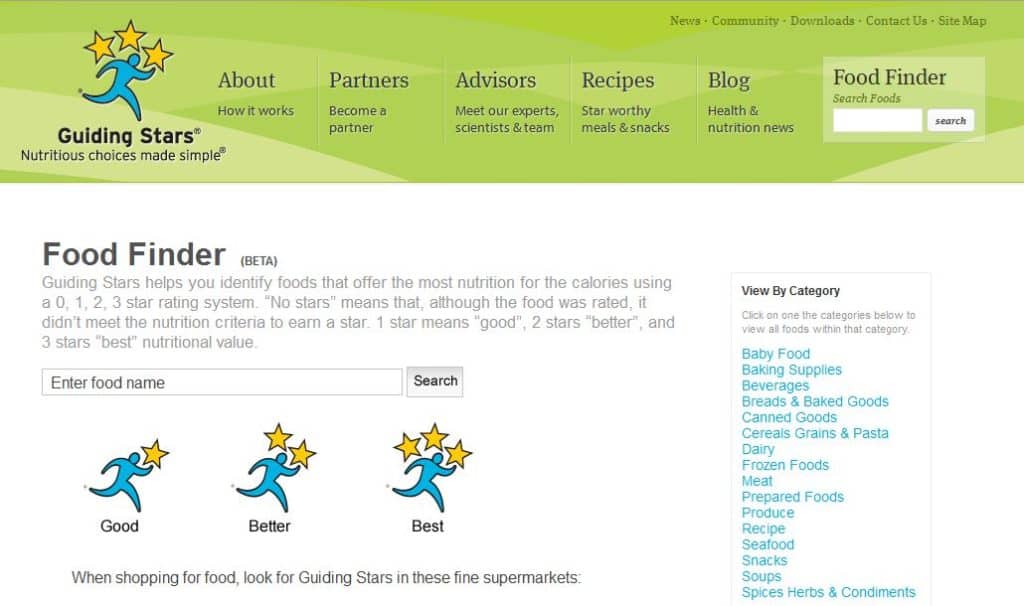During this past fall, the USDA hosted a video contest for kids. The challenge: create a 30-second video with tips for making half your plate fruits and veggies, without busting the bank. We’re excited about all these kids and their great ideas. Kids motivating other kids (and adults!) to eat more fruit and vegetables is a three-star idea.
Category: Healthy Kids
MyPlate Fruit & Veggies Video Challenge: Week 2
During this past fall, the USDA hosted a video contest for kids. The challenge: create a 30-second video with tips for making half your plate fruits and veggies, without busting the bank. We’re excited about all these kids and their great ideas. Kids motivating other kids (and adults!) to eat more fruit and vegetables is a three-star idea.
MyPlate Fruit & Veggies Video Challenge: Week 1
During this past fall, the USDA hosted a video contest for kids. The challenge: create a 30-second video with tips for making half your plate fruits and veggies, without busting the bank. We’re excited about all these kids and their great ideas. Kids motivating other kids (and adults!) to eat more fruit and vegetables is a three-star idea.
The New Lunch Standards

On January 25th I was invited to take part in a conference call preceding First Lady Michelle Obama’s announcement of the new National School Lunch Program standards. Hosted by Agriculture Secretary Tom Vilsack and Chef Rachael Ray, the purpose of the call was to update the media and other involved parties on the changes to the standards before the official announcement was made. These changes are a step in the right direction. As common sense as they seem, these improvements are truly revolutionary, and they will help ensure a higher standard of school food for the millions of children eating school lunches like these every day. But we should guard against allowing ourselves to think for one minute that our work is done or that the problem of substandard school food is solved.
Give Them the Tools: They’ll Use Them.

During the thirty- minute drive to Waterboro, Maine, I thought about what I would say to the sixty middle school students who waited there for me. What would they understand about Guiding Stars? What would interest them? Maybe their parents would have been a more appropriate audience for the message I was about to give, a message of nutrition, better choices and the hope for a change in the way so many of us are used to eating.
A Revolution for Nutrition

America is fat and getting fatter. Twenty years ago, no state in the country had an obesity rate above 15%. Currently, according to a recent study released by the Robert Wood Johnson Foundation, 38 states have obesity rates over 25%, and if you lump overweight people into the same group, the number jumps to 60%. These figures include kids, the future of our nation and two key parts of the problem are the persistent presence of junk food and a lack of access to scratch-cooked nutritious food. One of the key offenders making this problem worse day-by-day is…can you guess what I’m going to say? School lunches.
Money Doesn’t Grow On Trees? Neither Does Pizza, Congress.

Almost thirty years ago, after some Americans suggested ketchup was a vegetable, here we go again. This week, Congress released the final draft of an appropriations bill that threatens the USDA’s proposed improvements to school lunches. Among other things, the bill lumps tomato paste into the vegetable category, thereby making spinach and a slice of school lunch pizza analogous. Why? If we don’t allow it, schools will have to serve other (read: actual) vegetables, and that would be expensive, logistically challenging for schools and kids would be bummed. Yup. Bummed.
New Food in School?

Have you been wondering how, for as long as you can remember, pepperoni pizza and French fries fit into the meal pattern for lunch at school? How is it possible that foods high in fat, sodium and calories are able to make the grade as nutritious lunch choices for students? All that is about to change. As part of the Healthy, Hunger-Free Kids Act of 2010, the United States Department of Agriculture (USDA) has proposed new nutrition standards for school meal programs. Many of us in the nutrition community are very excited about the new set of standards since they propose to add more fruits, vegetables, whole grains and fat-free and low-fat milk to school meals while reducing the levels of sodium and saturated fat in those meals. These same nutrients are found in the Guiding Stars system used to rate the nutritional value of foods.